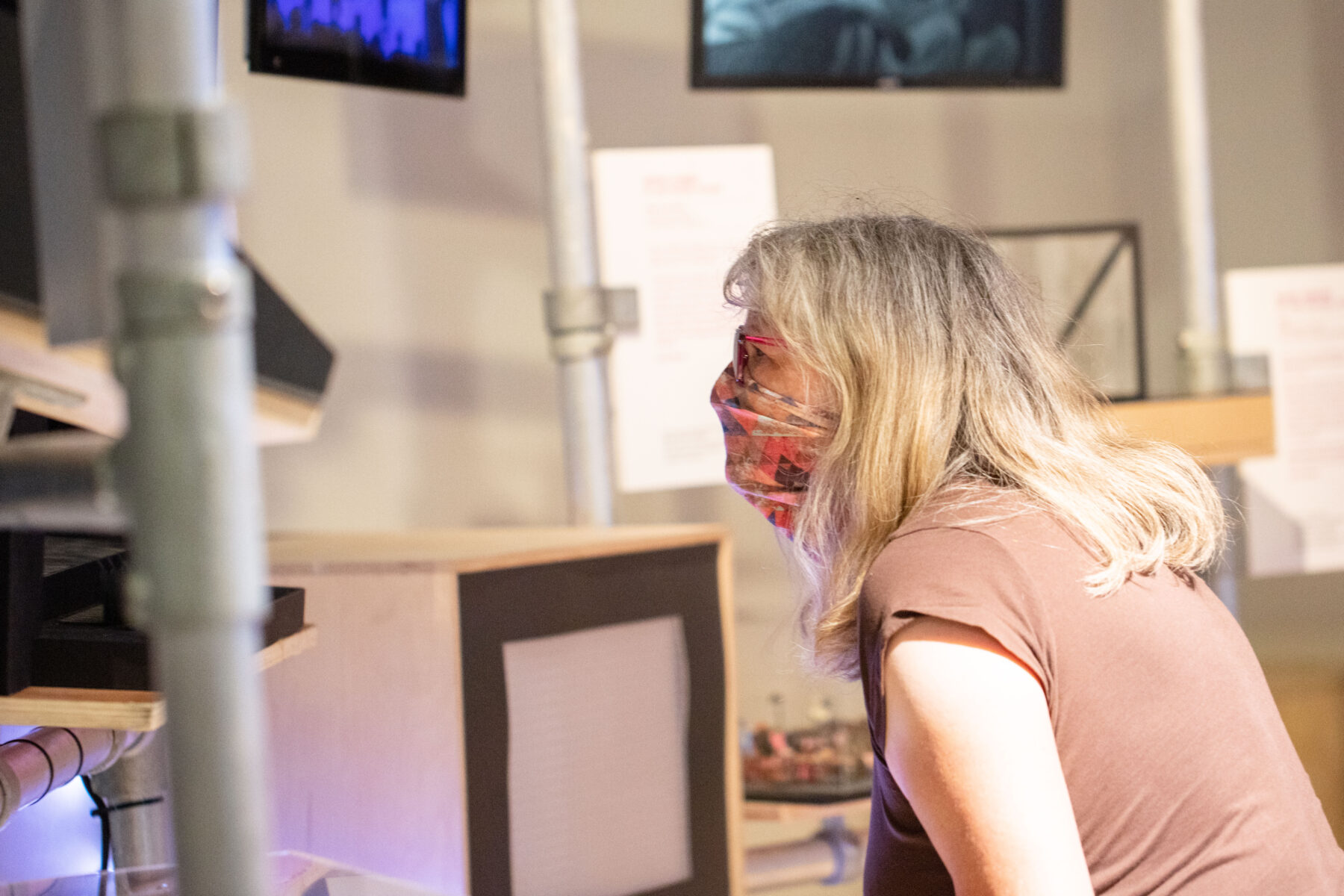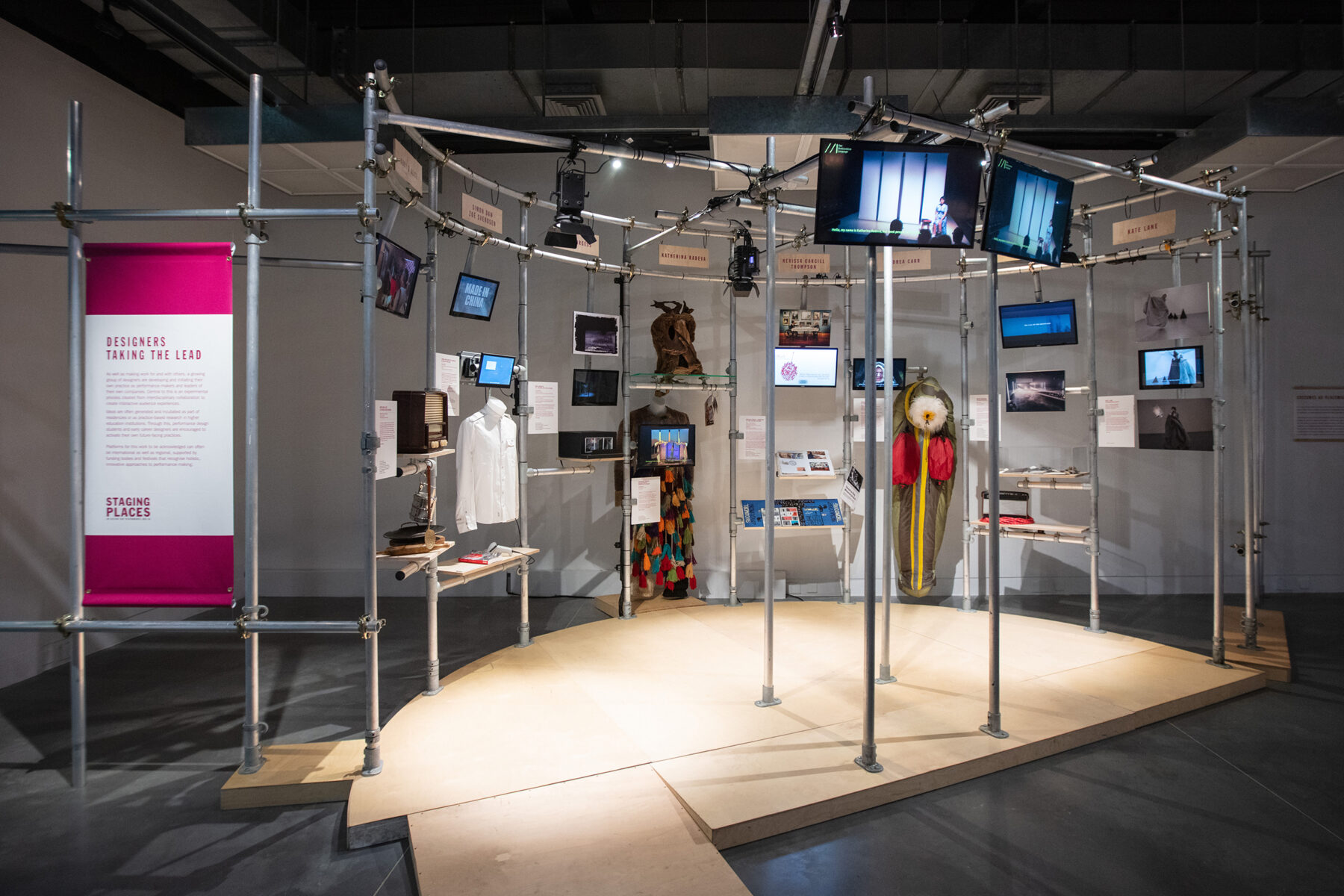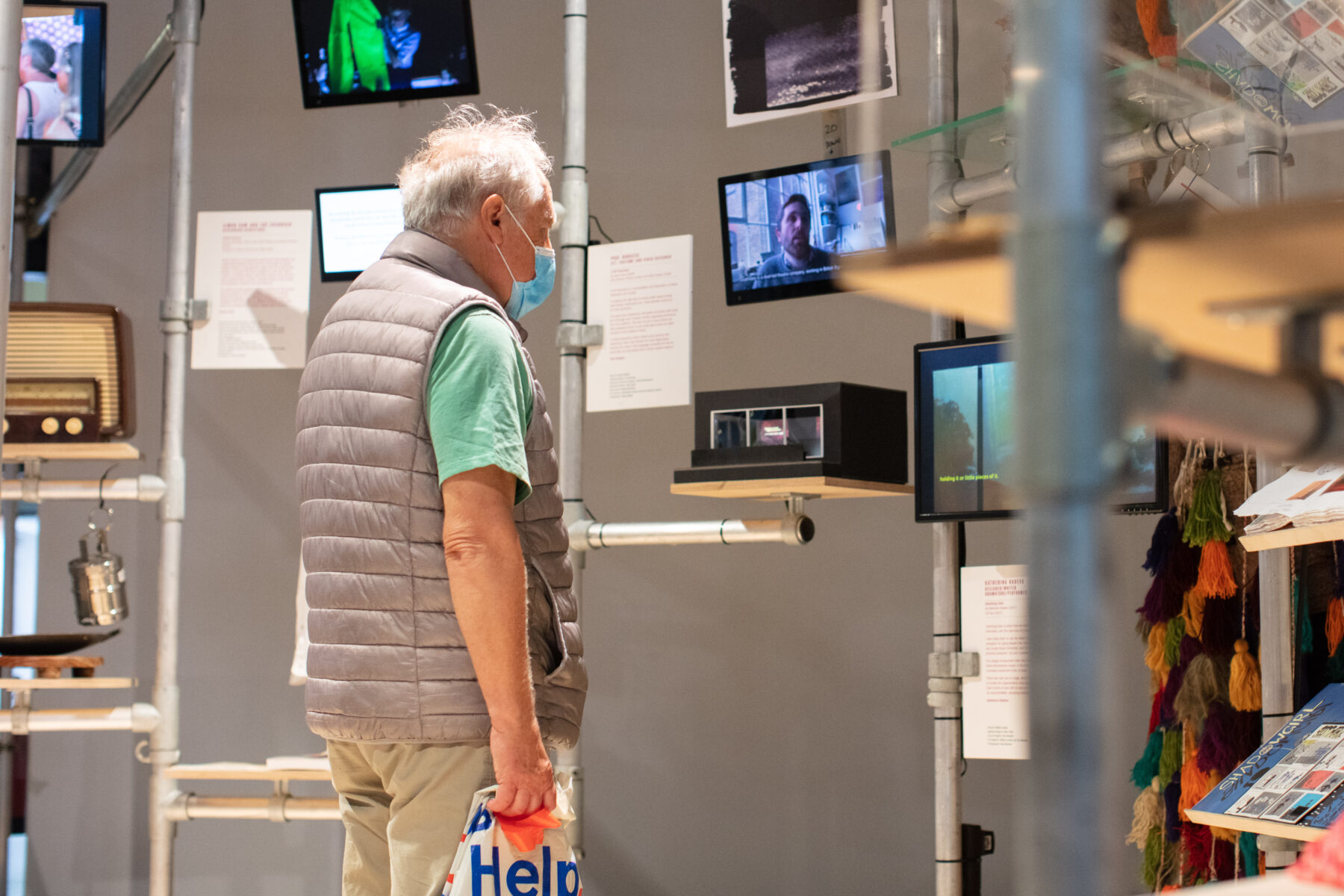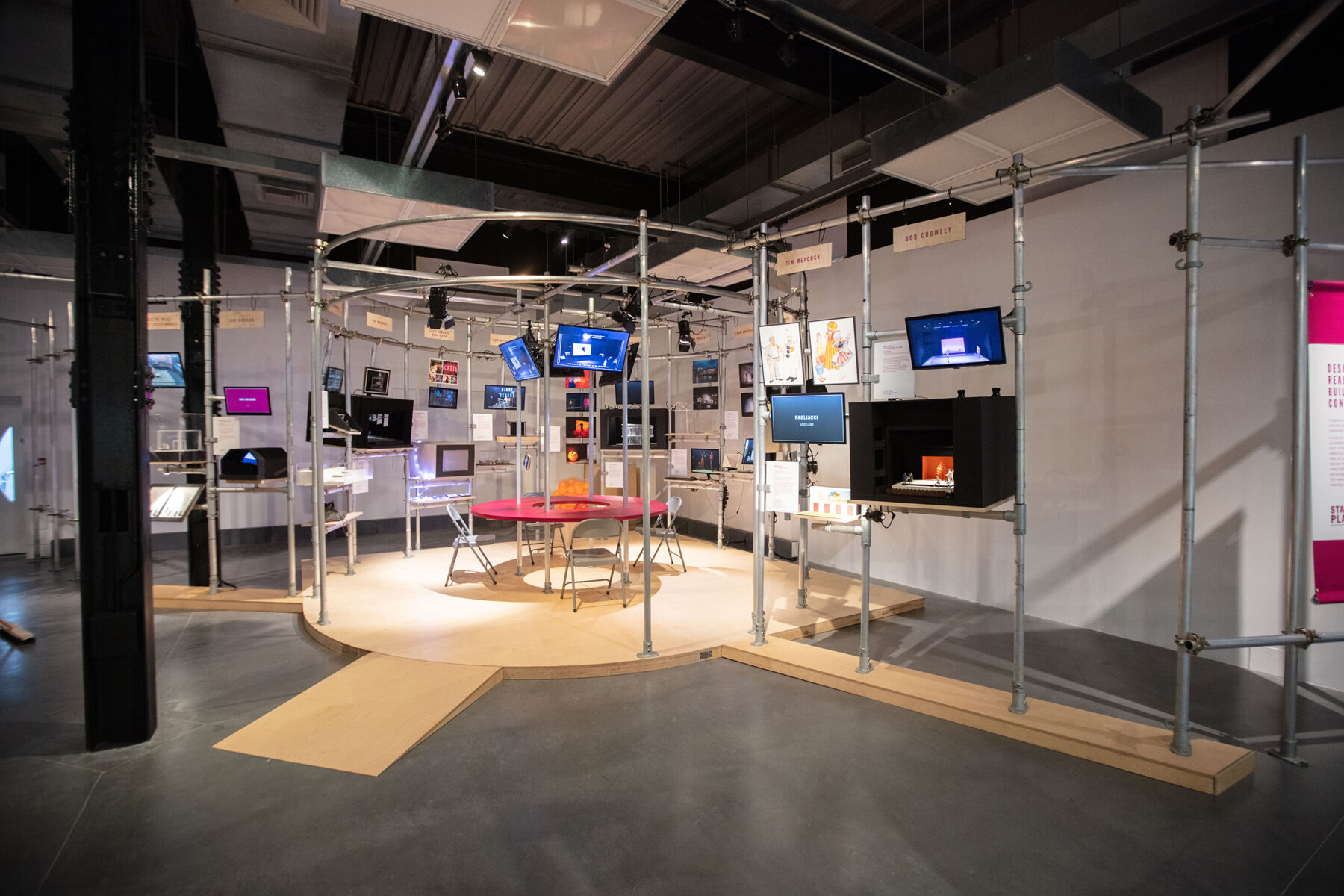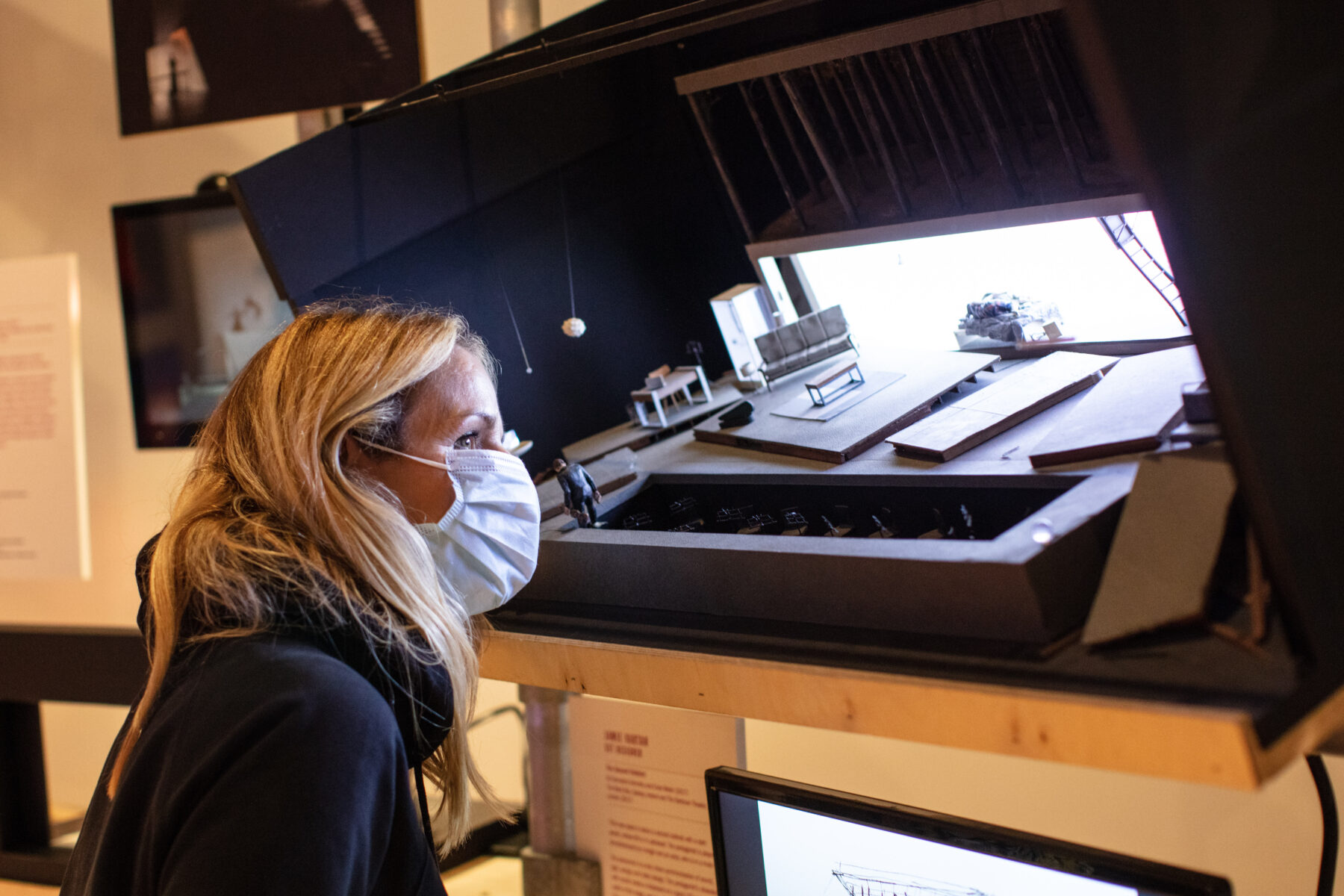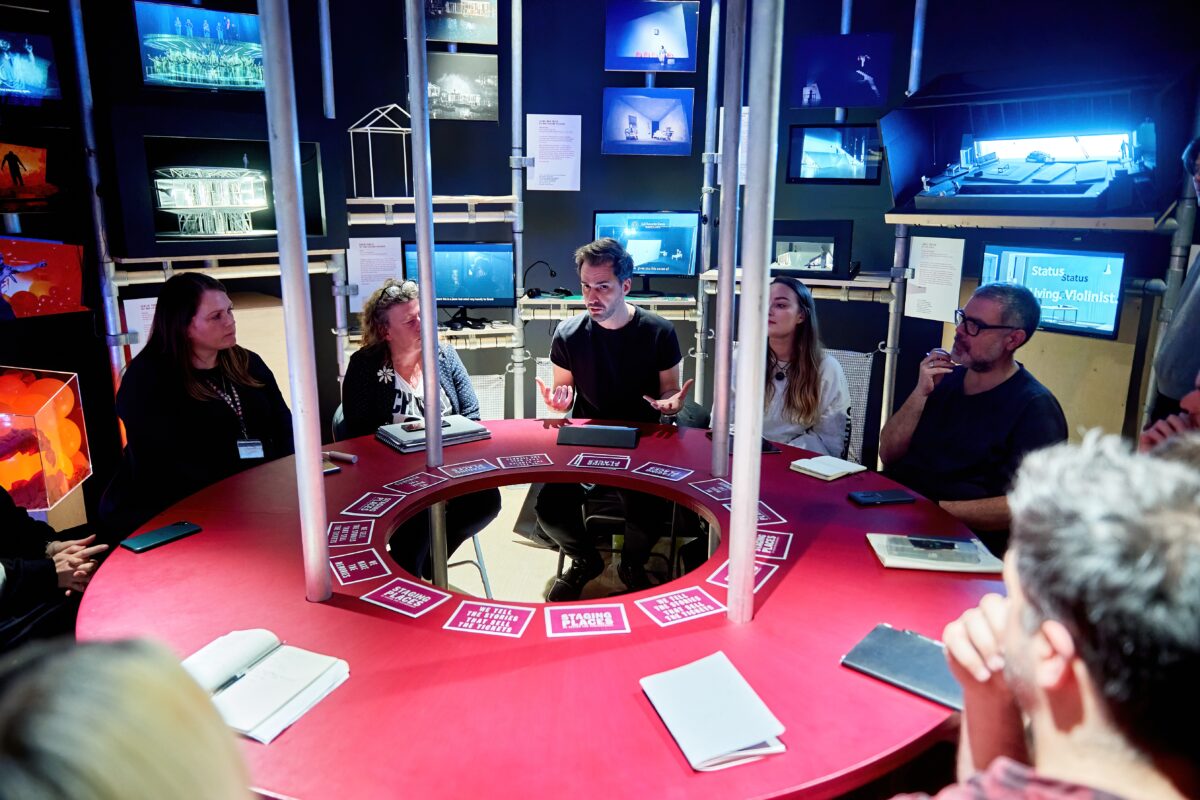Staging Places: Making the Invisible, Visible
Photo by Scott Murray
Staging Places: Making the Invisible, Visible
by Fiona Watt
Performance designers are 21st-century polymaths with a global reach.
Staging Places: UK Design for Performance celebrates the diversity of their work throughout the UK and internationally, acknowledging their impact on a wider sense of place-making and community.
As performance designers, we invent imaginary worlds and extraordinary environments in the staging places we call theatres and in the ones we don’t.
We animate cities, and we fill arts centres and opera houses.
We bring museums to life, transform heritage sites,
towns, cities, villages, and rural communities here in the UK and around the world.
We are, of course, collaborators too. Without the producers, directors, choreographers, makers, performers and the audience, the alchemy of live performance can’t happen. But performance designers don’t just work in these staging places now. Our work exists on your blog, your Twitter feed, your Instagram, your Facebook, your Tumblr, your Flickr, your YouTube channel, your livestream, in your augmented and your virtual realities and on Zoom.
The borders of where our work appears are porous and the hierarchies of our sector are dissolving.
We build the content.
We make the memories.
We are still storytellers….
Even now….
This is the manifesto that appears as the introduction to Staging Places: UK Design for Performance which we opened to the public at the National Centre for Craft and Design in Sleaford, Lincolnshire on Saturday 19th September. It is the third iteration of the exhibition having previously been at the Prague Quadrennial and the V&A and sits beautifully here as we originally envisioned it as Curator and Designer as an ‘open studio’ in a white walled space, vibrantly in dialogue with itself as a representation of the diversity of practice in the UK, the regional, national and international outlook of the designers’ work it celebrates and the Society itself.
As Curator and Chair of the Society, despite the current catastrophic circumstances of the pandemic, it feels vital that the manifesto remains in the present tense and that it has only minor and pertinent variations from the version that has appeared in previous iterations.
The curatorial focus of the exhibition continues to run in parallel with The Value of Design which is core to us as a professional association. In this context that intention extends beyond the profession itself to the audience/visitor encounter with what we do, why we do it and why more than ever live gatherings are vital to our empathy for others, our wellbeing and our sense of belonging.

At NCCD we have added two more exhibits which I feel are vital to the sharing of our core exhibition themes of the role that designers play in building a sense of place and community. Emma and Giuseppe Belli join us as designers with an international reach who are based in the East Midlands. Fox-Tot! introduces very young children to opera in a production that allows them to interact with the set, the performers and the music. The extraordinary skillset and production values of the Scottish Opera team are as in evidence here as they would be on any production for adults. I had the joy and privilege of seeing this production live at the Edinburgh Festival and a special mention has to go here to David Sneddon and his stage management team for so apparently effortlessly and gently managing the live space so that these toddling children and their parents felt that they had all the freedom they wanted to roam within this tactile world and encounter this extraordinary experience.
The second piece we have added in is Andreas Skourtis’s shortlisted submission to Our Theatre Our World at the Prague Quadrennial last summer, Performance Space as Collective Biography, which so powerfully and poignantly shares the importance and value of a performance space to a community of performance makers in his home town of Chiliomodi in Greece
Sleaford is a small and vibrant market town on the edge of the Lincolnshire Fens. We were incredibly fortunate that our get- out from the V&A was scheduled to take place prior to lockdown anyway and that before this exhibition was even curated or designed for PQ, NCCD said yes to bringing it here. The exhibition travelled up to Sleaford in March and went into storage for what we thought would be a relatively short time. It proved otherwise but throughout that time we genuinely feel that the staff at NCCD have cared for us and it whilst in the hibernation of lockdown. On the 19th September we truly did feel as though we had brought it back into the light on a gloriously sunny autumn day.
As designers it is still relatively rare, I feel, that we truly get to encounter audience members face to face and hear what they think about what we have offered them. Our opening morning reminded me of my favourite occasions as a designer of Highlands and Islands small scale tours for the Traverse, Edinburgh when we would arrive in a community to an incredible welcome and a genuine curiosity about the design, how it had come about and the part it played in telling the story.
I have made it a habit whilst curating this exhibition to sit in it, often apparently occupied on my laptop, just to watch and listen as people interact with it and say hello and talk a bit more if appropriate. These momentary encounters have brought joy on both sides. In Sleaford, my welcome to visitors was programmed in. The first person I met was an elderly man who had been anticipating our arrival for some time and was excited to have the chance to talk to someone involved in making the exhibition. He spent a considerable amount of time walking around the exhibition and came back to see me at the end. ‘Were there any particularly pieces you liked?’ I asked. He pointed over to Nerissa Cargill Thompson’s work with Proud & Loud Arts to make Shadow Girl ‘It’s so important that piece is there. I am so glad to see that.’ And he waved and left.
Our work is temporal and it felt vital, particularly now, that actual live performance was part of our opening event. It was the hardest bit to achieve given the understandable nervousness of local authorities etc. but we planned carefully, stayed simple and light on our feet and finally got clearance for Alex Rigg to drive his company, Oceanallover, down from Dumfries and Galloway to premiere excerpts of their new piece Ecdysis (In Vivo) on the Green directly outside the gallery to pre-booked small audiences. These audiences gathered as requested inside the bunting cordon, supervised by gallery staff in high vis jackets. And yet, of course, something else happened. People started watching from the windows of overlooking flats, from across the small river, from picnic tables further away (one of the local teenagers standing on a table to film the performance on her phone), and perhaps from the very first theatre seat we all create for ourselves, the knees of our parents or carers. Together, they all quite naturally formed their own, socially distanced amphitheatre, their own democratic space. They didn’t know they were going to encounter this performance in their day, they had no idea what it was, yet they stayed, transfixed as this band of chameleon-like strolling players shared a story, an event, an occasion, an encounter to remember by turning their local Green into a performance space.



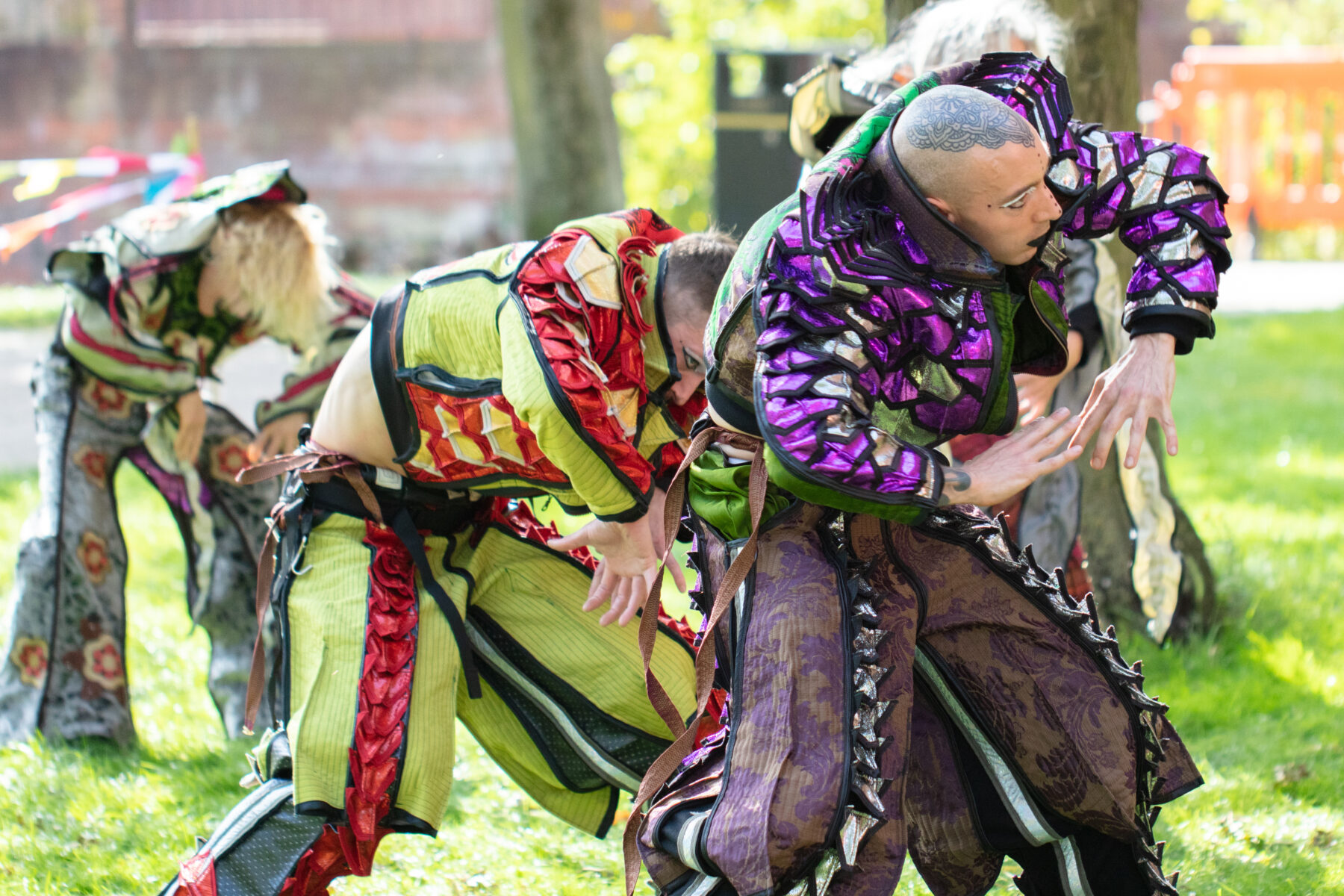
As the performers exited ‘stage right’ around the edge of the building, a little girl got up from her father’s knees and copied their movements and their giant steps exactly travelling as far as she could across the grass at a safe distance.
This is her future and if we still make the very best of what we have now in the places we are in now, live events and performance will belong to everyone and they will fight to belong to them locally and globally…
In its former life NCCD was a seed store and now part of its role is to protect and celebrate craft skills we are in danger of losing.
We will be programming a range of talks, activities and workshops physically and virtually to support and develop our Regional Heart: East Midlands which we will announce soon. If you are a freelance practitioner based in the East Midlands and would like to become a part of this supportive regional network, please get in touch.
The National Centre for Craft and Design, Main Gallery
19 Sep 2020 – 10 Jan 2021
Thu-Sun, 10am-4pm.
https://nccd.org.uk/exhibitions/staging-places
Curator: Fiona Watt
Designer: Andreas Skourtis
AV Designer: Eva Auster
Digital Gallery Designer: Paul Burgess

The Society of British Theatre Designers is run by designers for designers who willingly donate their time. We employ a part-time administrator. Please consider supporting our collective endeavours to advocate for and enable best practice by becoming a subscribing member. http://www.theatredesign.org.uk/join-us/
